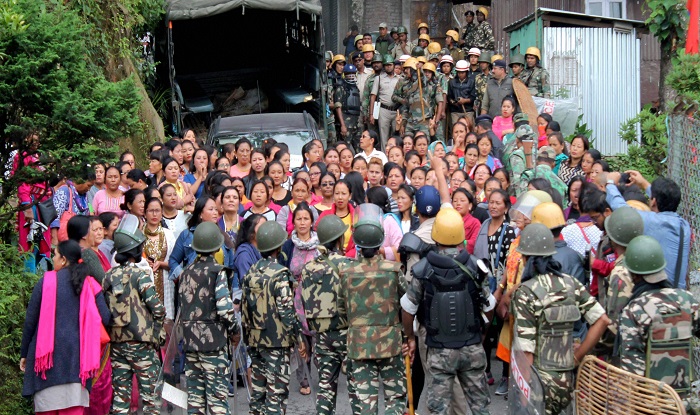The ongoing crisis that has paralysed the hill-station Darjeeling doesn’t seem to end anytime soon. The simple protest has now turned into a massive demonstration by the entire Gorkha Community with demands of a separate state, Gorkhaland taking the front.
It’s already been 13 days of the dispute with huge destruction across the town, several being killed and injured and continuous Bandh affecting the tourism and business of the region, but no steps were taken to end the crisis. Here’s how the conflict began and what had happened so far:
May 16
West Bengal Chief Minsiter Mamata Banerjee declared to make Bengali a compulsory subject.
The declaration was enough to incite Gorkha Janmukti Morcha (GJM) that rules the semi-autonomous Gorkhaland Territorial Administration (GTA). GJM interpreted the order as an imposition.
June 4
“The people in Mirik and other places would switch off their lights every day from 6 pm to 8 pm till June 8 as a mark of protest against the state government’s decision to make Bengali compulsory,” Binoy Tamang, GJM assistant secretary, said.
The government ignored the early reactions of GJM. CM Banerjee said the morcha leaders were making “an issue out of a non-issue”.
June 5 to 8
Banerjee reaches Darjeeling for a four-day tour. GJM president Bimal Gurung led protest rallies during CM’s visit demanding a cabinet resolution stating Bengali will not be forced in Darjeeling.
GJM supporter arrested for showing black flag to CM.
June 8
GJM supporters organise agitation near Raj Bhavan. Soon, CM clarifies that Bengali will not be compulsory for hill students. But it was too late by then.
Clashes erupt between police and GJM supporters. Banerjee deployed army as the situation worsen.
State government withdraws security cover of GJM chief Bimal Gurung.
June 9
GJM youth wing calls 12-hour Bandh in the hills.
June 10
Banerjee hints at severe police action. “Enough is enough. We can’t compromise any longer with a party that uses bombs and guns,” she had said.
June 11-12
GJM supporters destroyed block development office in Bijanbari around midnight. Protesters set fire PWD office and vandalise a state-run power utility office in Darjeeling.
June 13
Resolution to press on a separate state, Gorkhaland was adopted at a meet by political parties including BJP.
June 15
Police raid GJM office. Weapons such as bows and arrows, axe, scythes and cash were seized.
GJM retaliates by calling an indefinite Bandh.
Clashes blow up again between police and GJM.
June 20
Date of the next all-party meeting.
June 21
Indefinite Bandh in Darjeeling to continue announces GJM after all-party meeting.
June 22
Following the Gorkhaland unrest, Sikkim Chief Minister, Pawan Kumar Chamling has come out in support of the demand for a separate Gorkhaland.
A case was lodged against Gurung and his wife Asha for alleged involvement in violence, torching and killing of one person during clashes in Darjeeling.
June 25
Darjeeling: GJM gives 12-hour relief from bandh for Eid
June 26
No sign of relief was seen even after 12 days of an indefinite strike.
June 27
GJM activists burned copies of the Gorkhaland Territorial Administration accord. The accord was signed on July 18, 2011 between the Centre, state and GJM that allows the semi-autonomous body to rule the hills.

















